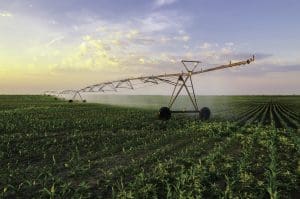
By Blaine Davis Contributing Editor
Coming off of a 10-day sabbatical from my architectural and agribusiness duties to be a grandpa to 9- and 12-year-old boys, my new duties were attending seventh-grade football games, the 9-year-old’s soccer practices and subsequent games, along with many other various boyhood antics. Then, there was getting two boys to school on time with the previous night’s showers, appropriate sleep and always reminding them to brush their teeth; but I still found opportunities to catch an adult lunch and a libation. As I became more acquainted with the wait staff at my favorite spot, I’d joke like a bad comedian playing a Vegas night club, “I’ll be here all week.”
Throughout the week, the boys and I learned a lot and, hopefully, what they learned from their papa stays between us, like what happens in Vegas.
But, what I learned from the oldest became rather concerning and just can’t be kept between us. As I was chauffeuring him to a school fun-night event, he stated, “We should quit pumping water from the Ogallala aquifer!”
“Where did you get that theory?” I asked.
“From my teacher,” he replied.
This opened the door for my rendition of teachers having an agenda and their indoctrination of our youth. I wanted to ask this teacher, “Are you ready to pay more for the food on your table and provide assistance for the large labor force, from farmers to grocery store clerks, whose jobs would be sacrificed?”
From my soapbox, I went on to lecture my grandson that I pump that water from the aquifer to raise crops and am aware of the limited amount in the aquifer. Thus, I do my due diligence in proper conservation management of this resource. Much like the green movement is pushing electricity as a propulsion method for everything from my personal automobile and lawn equipment to that of over-the-road trucking sans the infrastructure or production capacity in place, this is another example of draconian logic.
From what I consider a small family farm, our corn crop derived from this water can produce nearly 280,000 gallons of ethanol, which the green movement advocates. Blended with conventional petroleum-based fuels, this byproduct of corn farming can produce 1.85 to 2.8 million gallons of cleaner burning gasohol fuel. This same amount of corn can be utilized to finish feeding approximately 2,000 head of beef cattle, which I remind my grandson is where that large, bone-in tomahawk ribeye steak he so cherishes on his birthday comes from. Without the use of the aquifer’s water to irrigate the cropland, our choices of crops would drastically change to that of dryland farming with more wheat and feed grains like sorghum. Largely, it would take one-half of the acres out of production each year with a conversion to a summer-fallow program. Not only would one-half of the farm not be producing each year, our income would fall more than 50 percent.
Not considering my reduced farm income would limit the pile of Christmas presents under the tree or the length of and number of family vacations, the economics of this green theory would be even more drastic and encompassing. At the farm itself, with one-half the production, one or two hired hands would be eliminated. On up the ladder, the grain elevator or ethanol plant wouldn’t receive as many bushels and, consequently, wouldn’t need as many employees. Thinking of our dear late friend, Baxter Black, and his exposé on the large sign over the Brookover Feedyard in Garden City, Kan., “Eat Beef Keep Slim,” with less corn and fewer cattle, Slim would be laid off.
Employment throughout the agricultural economy, from chemical and fertilizer production to manufacturing of cultivation and irrigation equipment, would take a large downturn. And, unlike our present Washington administration’s advice to the laid-off pipeline welders to “get a job in the computer-coding field,” that just don’t play.
On a larger stage – the world economy – United State’s corn exports in 2022 totaled $18.57 billion, and wheat exports totaled $8.32 billion, heading to countries from Mexico and Canada to the Pacific Rim. Meat exports, which consume grain crops, tallied $11.71 billion for beef, $7.7 billion for pork and $5.96 billion for poultry. Together, these exports are the “make or break” factor to the American farmer/producer.
While I know that all of these commodities aren’t produced through the use of the water from the aquifer, it is still vital to mid-America and the nation’s overall agriculture economy. But, on the land over this aquifer, encompassing Texas, Nebraska, Kansas and Colorado, there are 9.41 million head of cattle on feed. With a farm such as ours, another 4,704 farms would be required to provide the corn just to finish these cattle to harvest.
While I have only touched on corn production in the form of livestock feed and ethanol, there are those of corn oil for cooking, corn syrup and sweeteners and even the movie-theater popcorn. Each of these factions involves industrial processing and providing families an annual income.
Just like the bad comedian, my gig is now up, and I am back to sorting through several architectural projects, looking to corn harvest and placement of such, planting next year’s wheat and emptying the rain gauge. With what I received while on my sabbatical – 2.75 inches – my wheat will have a great start and I can reassure my grandson that I have been a good steward of the aquifer.







